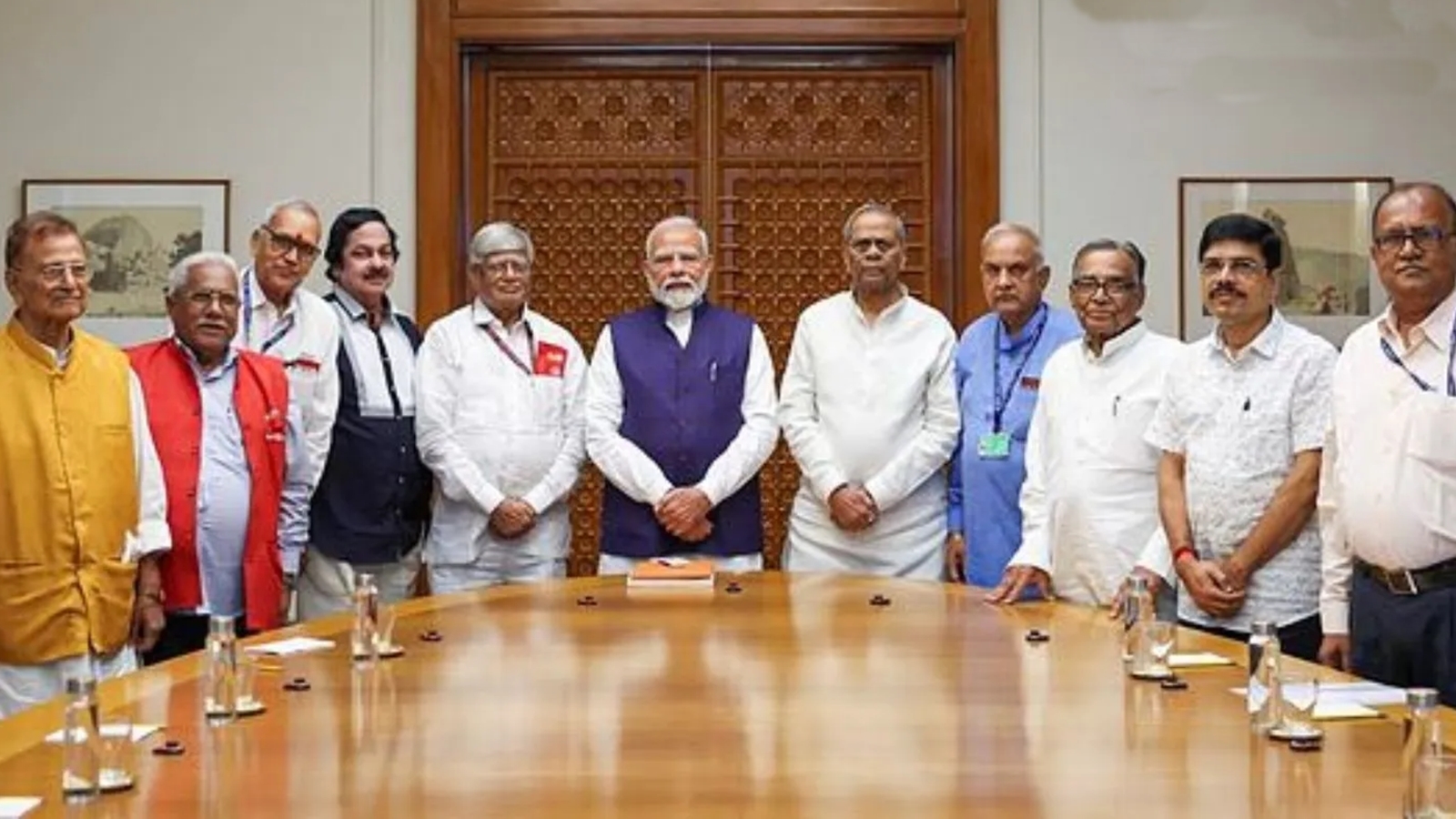
In March 2023, a committee was announced to review the New Pension Scheme (NPS) for civilian employees of the Union government. Based on the review report, the government has revised the rules guiding retirement benefits of those mandatorily channelled into the NPS. The revised rules ostensibly reconfirm the intent of a pre-funded system for old age income support (OAIS) out of a corpus grown during work life in individual retirement accounts. These accounts are to be managed professionally under the oversight of the Pension Fund Regulatory and Development Authority (PFRDA). All states, except West Bengal, had also acceded to the NPS. But since the beginning of 2023, governments in at least five other states have either jumped off that bandwagon or declared such an intent.
The revised rules announced as the Unified Pension Scheme (UPS) closely harmonise benefits for ceding employees with those flowing from the Old Pension Scheme (OPS). But the UPS raises the co-contribution rate for the government to 18.5 per cent (from currently 14 per cent, and from 10 per cent when first introduced). The co-contribution by the government on account of current employees only ratchets up the trend in expenditure on pension and other retirement benefits (PORB) of the current pensioners from the OPS. This yields little to advance the core objectives for the pension system reform to, one, curtail the ballooning burden of public expenditure on PORB, and, two, serve the as yet unserved/under-served by widening the inclusion of workers and coverage of the elderly with institutional access to OAIS.
The strategy adopted in 2003 minimised the concern with the first objective as one that could be solved merely through financial intermediation. It also underplayed the workers’ concern about the certainty of the pension (deferred compensation) amount or the additional burden due to government co-contribution in the NPS (now UPS). But, the failure to address the second objective is more severe as even under the most liberal assumptions, at least 80 per cent of workers (exceeding 380 million) are yet not included in the institutional OAIS system and at least 60 per cent of the elderly (exceeding 85 million) do not draw OAIS from public expenditure.
The proportion of elderly people in the population hovers around 10 per cent. The expenditure by the general government on the OAIS system (including social pensions) constitutes a similar proportion. While this component of public expenditure is essentially a transfer only to the elderly, they also benefit from other avenues of public expenditure to varying degrees. Aggregate public expenditure (if it could be linked to age-cohorts in some inter-generational accounting framework) in India may therefore be weighing in favour of the elderly.
Of far greater import, however, is the concern with intra-generational equity of public expenditure on OAIS as more than three-fourths of it only benefits less than one-seventh of the elderly constituting ceding workers (or their survivors) from government service.
Inroads to sustainably widen worker participation and elderly coverage in a low-middle-income economy like India entails sustaining incentives with additional and targeted allocation of public resources. Thus, while the two objectives for pension reform are ostensibly disjoint, in India success along the second objective is complementary to success along the first. That in turn implies only reallocation of the extant draught of public resources away from the ceding government workers and targeted towards widening the inclusion of workers and elderly. Yet, the harmonised shrill of the collective voice of barely 3.5 per cent of all workers who are employed by the government at all levels continues to ring loud. And, unfortunately, the voice of the large majority that is excluded from the OAIS system remains muted and therefore has been ignored all along.
In 2020-21, more than 9 per cent of general government expenditure was circumscribed by the ex-workers (or their kin) from the government. It can hardly be justifiable to deny benefits to those already covered, but it also appears immoral if provisions determining retirement benefits constitute an overreach and/or violate basic tenets to reward work contribution under amiable conditions. For example, provision for encashment of earned leaves dilutes the object of mandating earned leaves that is intended to promote work-life balance; lump-sum commutation of pension that, in effect, connotes an advance drawal of a fraction of future stream of income, but should it be admissible if drawing a salary advance is repugnant; the absence of a stipulation on the minimum age for drawing benefits intended for OAIS could start flowing in even before reaching the age of 40 years; considering only peak emoluments as the basis for deferred compensation; and indexation of pensioners benefits to current workers’ emoluments. Graded elimination of the overreach from these provisions should be the core of reform proposals. These not only affect the draught on public resources but also perniciously influence incentives for participation, engagement, and exit from the labour market.
The government’s announcement comes across as aggressive posturing to defend the course of pension reforms initiated in 2003 and restore the relevance of PFRDA that had started to vane with some states resolving to exit the NPS. However, unlike the enthusiasm whipped up about two decades ago that enabled the states to hop on to the bandwagon then, this time around there is likely to be expressed reluctance in some states to repeat that act. Indeed, that can only foment their resolve to revert completely to the OPS. But, the biggest loser in the process would be the vast majority of excluded workers and uncovered elderly. Their collective voice must be amplified to enable the rewriting of a social contract for enhancing inter- and intra-generational equity attributes of public expenditure on OAIS.
The writer is Associate Professor, NIPFP. Views are personal



